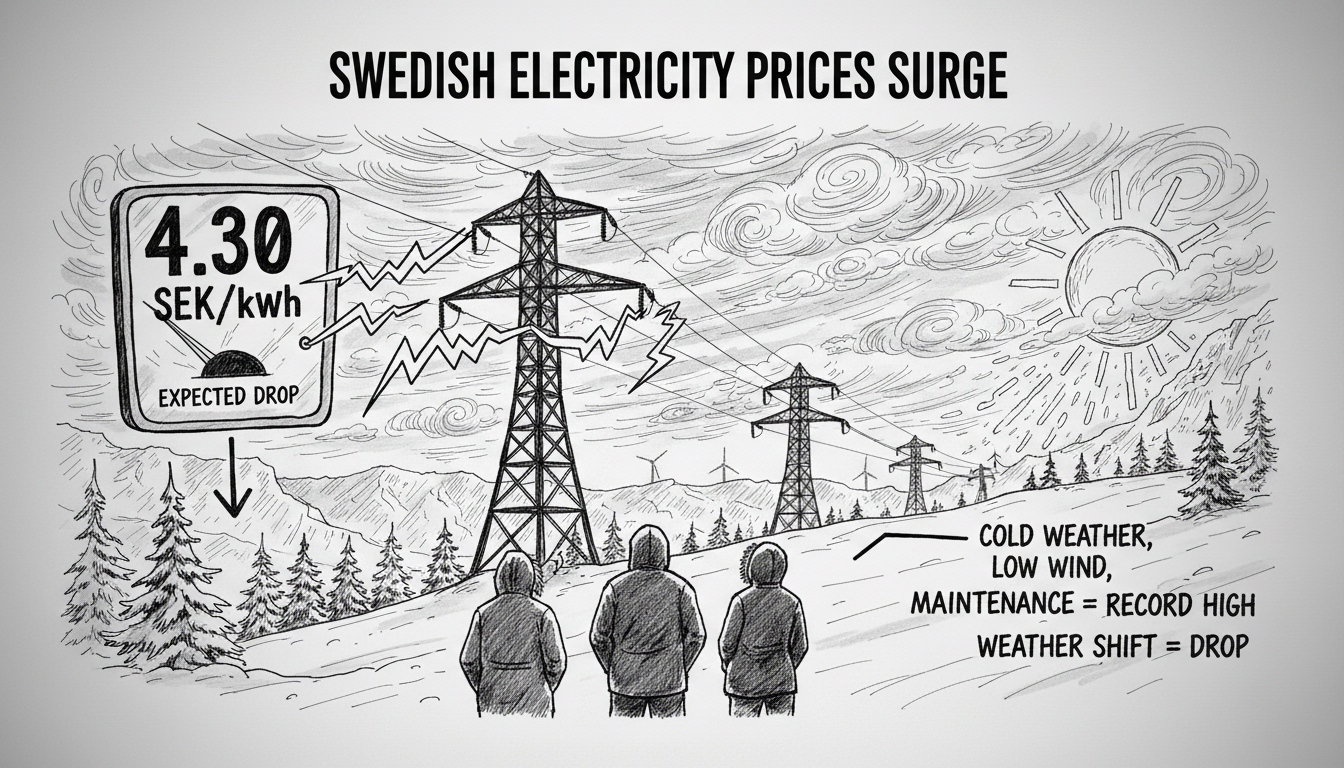Swedish electricity prices surged dramatically on Friday, reaching nearly 4.30 kronor per kilowatt-hour during peak hours. The spot price for electricity hit unprecedented levels across southern Sweden, creating concerns for households and businesses alike.
Energy market analyst Johan Sigvardsson confirmed the price spike. He pointed to three clear factors driving the increase. A sudden cold snap across Scandinavia created higher demand for heating. Limited wind power generation reduced renewable energy supply. Nuclear power plant maintenance schedules further constrained available capacity.
Sigvardsson offered reassurance about future pricing trends. He stated that a radical weather shift is coming soon. This change will bring milder temperatures across the region. The analyst expects electricity prices to decrease significantly in the coming days.
Sweden's electricity market operates on a unique Nordic model. The country divides into multiple price zones based on transmission capacity. Southern regions typically face higher prices than northern areas. This reflects the challenges of moving electricity across long distances.
The current price surge affects consumers directly. Households with variable-rate contracts see immediate bill increases. Businesses face higher operational costs during production hours. The timing creates particular strain during colder months when energy needs rise.
Swedish energy policy has evolved significantly in recent years. The country phased out nuclear power while expanding renewable sources. This transition created a more volatile pricing environment. Weather conditions now play a larger role in determining electricity costs.
International readers should understand Sweden's energy landscape. The country generates most electricity from hydro, nuclear, and wind sources. Price fluctuations occur frequently but rarely reach current levels. Most Swedish households choose fixed-price contracts to avoid sudden spikes.
The current situation highlights broader European energy challenges. Countries across the continent face similar pricing pressures. Sweden's case demonstrates how weather and infrastructure interact. The expected price drop will provide relief but not solve underlying market dynamics.
Energy experts monitor these developments closely. They note that price volatility may continue through winter months. Consumers should consider their contract options carefully. The market appears poised for correction as weather patterns normalize.

